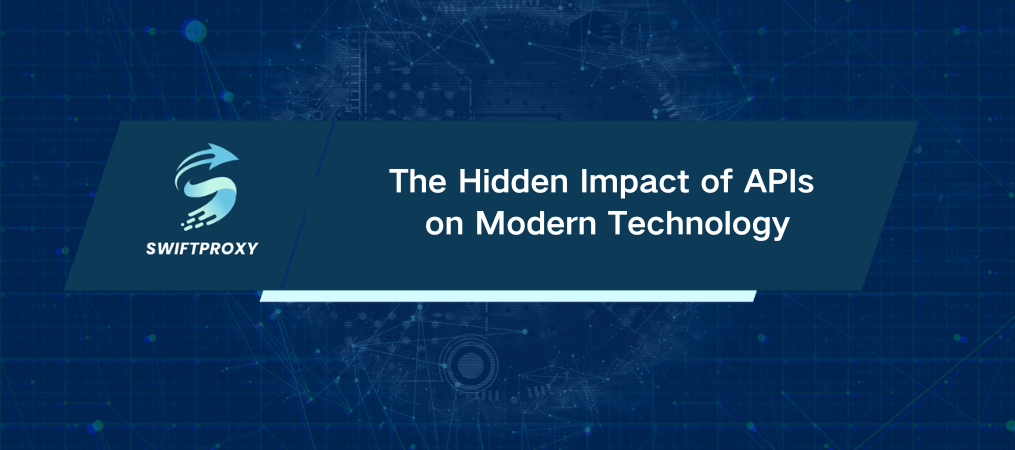The Hidden Impact of APIs on Modern Technology

APIs. You've heard of them, but do you really understand how they're shaping the digital landscape? APIs are everywhere, powering everything from your favorite apps to complex software ecosystems. They enable different systems to communicate, saving developers countless hours and enabling businesses to innovate faster. In a world where time equals money, APIs are the unsung heroes that make seamless experiences possible.
So, let's dive into what APIs are and why they matter more than ever.
Introduction to API
Think of an API as the bridge between two worlds. It's the interface that allows different software to talk to each other and exchange information. When you use an app or visit a website, you don't see these exchanges happening behind the scenes, but trust me, they're crucial.
For example, you're working on a fitness app and want to add music features so users can stream playlists while working out. Instead of spending months building your own music library, you can use an API to connect to a music streaming service like Spotify or Apple Music. Your app sends a request through the API to their server, and you get the music without the hassle of managing playlists.
The Mechanics Behind APIs
At their core, APIs work by allowing one piece of software to make a request to another. The client (that's you or your app) sends a request to a server, asking for specific data or functionality. The server then processes the request and sends the response back. Sometimes, the request will need an API key for authentication—this is a way to ensure that only authorized users can access certain data or services.
Simple, right? It's like sending a letter to a friend asking for a book, and they send it back to you. The letter is the request, and the book is the data.
API Architecture: Building the Backbone
The architecture of an API is like its blueprint—it dictates how it will be constructed and how it will interact with other systems. A solid API architecture is essential, especially for large-scale projects that require scalability and flexibility. It ensures the API works efficiently, securely, and remains easy to maintain as it grows. For businesses looking to build modular, reusable systems, a strong API architecture is a must.
A Deep Dive into API Architecture Types
APIs don't come in a one-size-fits-all package. The architecture of an API can vary depending on the needs of the system. Let's break down some of the most popular types:
1. REST (Representational State Transfer)
REST is the king of modern web APIs. It's lightweight, flexible, and ideal for web-based applications. If you've used a web service in the past, it was probably built using REST. It's simple to integrate, making it perfect for everything from cloud applications to mobile apps.
2. SOAP (Simple Object Access Protocol)
SOAP APIs are all about security and reliability. While more complex than REST, they offer a higher level of security, making them a good fit for situations that require more rigorous data protection—like internal business processes or working with trusted partners.
3. RPS (Remote Procedure Call)
RPS is less common but still useful for specific internal applications. Instead of just sending data back and forth, RPS allows the client to execute processes on a remote server. Think of it as running a program on someone else's computer.
4. GraphQL
Developed by Facebook, GraphQL is the latest innovation in API design. It allows clients to request exactly the data they need, which makes it faster and more efficient than traditional REST APIs. It's quickly becoming the go-to choice for tech teams who want more control over their data flow.
Choosing the Right API for Your Needs
APIs come in several flavors. Understanding the different types will help you choose the right one for your needs:
1. Public APIs
These are the open doors to a wealth of data. Public APIs are available for any developer to use, usually with a registration or API key. They're perfect for accessing services and data from other platforms without reinventing the wheel.
2. Partner APIs
Want to collaborate with another company? Partner APIs are the way to go. These APIs are shared between trusted partners and usually require specific validation before you can access them. They're like VIP access to exclusive services.
3. Private APIs
Private APIs are internal-only, meant for use within a company's systems. They help internal teams streamline processes, and you won't find them available to the public.
4. Composite APIs
Sometimes, you need to make multiple API requests at once. That's where composite APIs come in. They bundle several requests into one, saving on bandwidth and improving efficiency.
Using APIs to Bolster Security
Many people think APIs can provide security, but let's clear that up. APIs don't protect your data; they expose it in a controlled way. If you're offering a service through an API, you can control what data is accessible, but it's not a security shield. It's like having a window into your house: you control what's visible, but the window doesn't keep burglars out.
If you're concerned about security, you'll need other measures in place—such as encryption and secure authentication—alongside your API.
Integrating with Public APIs for Better Connectivity
In today's connected world, public APIs have become indispensable. Whether you're integrating a third-party service into your app or accessing crucial data, these APIs are there to save time and enhance functionality. With more services available, API integration is becoming easier than ever.
Wrapping Up
APIs are the lifeblood of modern software development. They empower developers to create innovative solutions faster, reduce redundancy, and focus on what matters most—building the future. Whether you're building an app, connecting services, or enhancing security, APIs are the key to unlocking new levels of efficiency and creativity.

















































